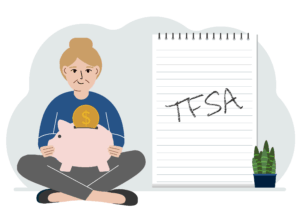
In Ontario, when you die, your Tax-Free Savings Account stops being a TFSA as of the date of your death. What happens next depends entirely on your beneficiary designations—a critical aspect of estate planning that many overlook.
Treatment After Death
- The fair market value (FMV) of your TFSA at the time of death passes to your estate or directly to your designated beneficiaries tax-free.
- Any growth, income, or gains that occur after the date of death are taxable to the recipient under regular tax rules.
- If you name a successor holder (which can only be your spouse or common-law partner), it transfers to them and retains its tax-free growth status. Your spouse becomes the new TFSA holder with no impact on their own contribution room.
- If your spouse or partner is named as a beneficiary rather than a successor holder, they have until December 31 of the year following your death to transfer the FMV of your TFSA at death into their own as an ‘exempt contribution.’ This will not affect their existing TFSA room, but must be reported to the Canada Revenue Agency with Form RC240 within 30 days after the contribution.
If No Successor or Beneficiary is Named
The value of the Tax Free Savings account becomes part of your estate (and is subject to Probate Fees at 1.5%)and is distributed according to your will. The Fair Market Value at death remains tax-free, but any post-death investment gains become taxable income for the estate or eventual beneficiary.
Non-Spouse Beneficiaries
- Children or other individuals who inherit a TFSA receive the funds tax-free up to the value at your date of death, but any income or gains after that are taxable.
- They may only contribute inherited amounts to their own Tax Free Savings account if they have available contribution room.
Key Takeaways
- Naming a spouse as a successor holder keeps TFSA status intact and is the most seamless option.
- Naming a spouse as beneficiary allows a one-time, tax-free transfer up to the Fair Market Value at death.
- Any growth after death is taxable—act quickly to minimize taxes.
- Other beneficiaries receive the FMV tax-free but must pay tax on post-death growth.
Properly designating a successor holder or beneficiary and acting quickly after death can help minimize taxes and avoid complications with your TFSA in Ontario. Reach out to Peter if you need help. (and not to forget: also name a Contingent Beneficiary –worst case –your named “Beneficiary” dies at the same time or shortly thereafter: increases in Taxes)
You might want to check out our article on the Importance of Naming Beneficiaries for RRSP, RRIF, and TFSA
Want more information?
Are you interested in a consultation with Peter R. Welsh?
Contact me at Peter@SmartWills.ca
By telephone 416-526-3121
Register for our blog to get valuable tips and up-to-date alerts.
This material is for general information and educational purposes only. Information is based on data gathered from what we believe are reliable sources. It is not guaranteed as to accuracy, does not purport to be complete and is not intended to be used as a primary basis for investment decisions.


